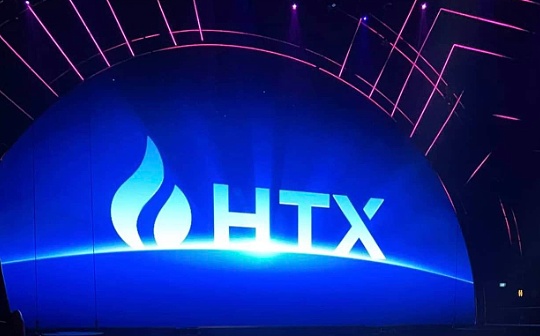
Original title:From prediction markets to info finance
Author: Vitalik, founder of Ethereum; compiled by: 0xjs@Bitchain Vision
One of the Ethereum applications that excite me the most is the prediction market.In 2014, I wrote an article aboutfutarchy’s article, this is a prediction-based governance model conceived by Robin Hanson.Back in 2015, I was an active user and supporter of Augur (see, my name isWikipedia articlesmiddle).I made $58,000 in my 2020 election betting.This year, I have been a close supporter and follower of Polymarket.
For many people, predicting the market is betting on elections, and placing an election is betting on elections—it would be great if it would make people have fun, but fundamentally it is no more than in pump.funIt’s more fun to buy random tokens on it.From this perspective, my interest in the forecasting market seems confusing.So, in this post, I aim to explain why this concept makes me excited.In short, I believe (i) even if the existing forecasting market is a very useful tool for the world, but in addition (ii) the forecasting market is just an example of a larger, very powerful category that has the potential to createBetter implementation of social media, science, news, governance and other fields.I will call this category “info finance”.
Polymarket’s two sides: betting websites for participants, news websites for everyone else
Polymarket has been a very effective source of information about the U.S. election over the past week.Not only does Polymarket predict Trump’s chances of winning at 60/40 (while other sources predicted 50/50, which is not too impressive in itself), it also shows other advantages: When the results come out, although many expertsAnd news sources have been luring viewers in the hope that they can hear news that is good for Harris, but Polymarket reveals the truth directly: Trump has a more than 95% chance of winning, while taking control of all government departments is more than 90% chance of winning..
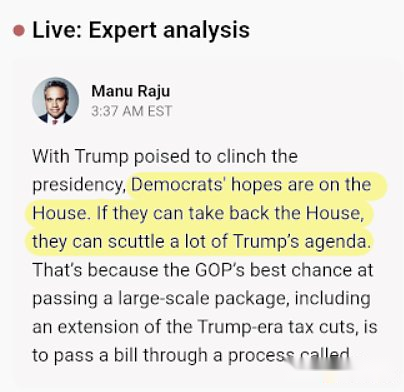
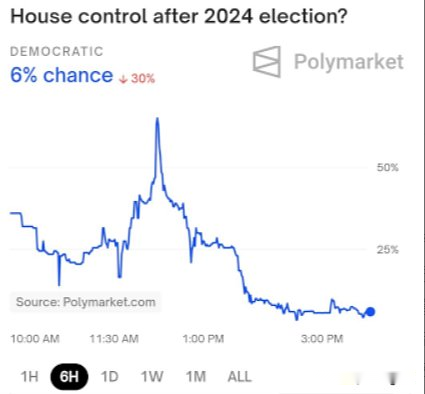
Both screenshots were taken at 3:40 am ET on November 6th
But to me, this isn’t even the best example of Polymarket’s interesting.So let’s look at another example: the elections in Venezuela in July.The day after the election, I remember seeing someone protesting the highly manipulated election results from the corner of my eyes.At first, I didn’t care much.I know Maduro is already one of those “basically dictator” characters, so I think, of course he will forge the results of every election to keep his power, of course there will be people protesting, of course the protest will fail – unfortunatelyWhat is, many others failed.But then I saw this when I scrolled on Polymarket:
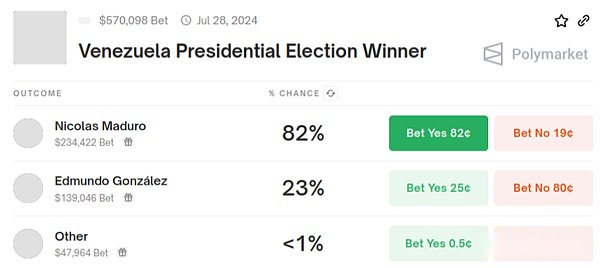
People are willing to invest more than one hundred thousand dollars, betting that Maduro is 23% likely to be overthrown in this election.Now I’m starting to pay attention.
Of course, we know the unfortunate consequences of this situation.Ultimately, Maduro did continue to take power.However, the market made me realize that this time, the attempt to overthrow Maduro was serious.The protests were huge, and the opposition had an unexpectedly well-executed strategy that proved to the world how fraudulent the election was.If I hadn’t received the initial signal from Polymarket “This time, there are some things worth paying attention to,” I wouldn’t even start paying attention.
You should never fully believe in Polymarket betting charts: If everyone believes in betting charts, then any rich man can manipulate betting charts and no one dares to bet with them.On the other hand, it is also a bad idea to fully believe in the news.News has a sensational motivation to exaggerate the consequences of anything for the number of clicks.Sometimes, this is reasonable, sometimes it is not.If you see a sensational article, but then you go to the market and find that the probability of related events has not changed at all, then doubt makes sense.Or, if you see unexpected high or low probability in the market, or unexpected sudden changes, it is a signal that allows you to read through the news and see what causes it.Conclusion: You can get more information by reading news and betting charts than reading any of them alone.
Let’s review what’s going on here.If you are a betting player, then you can bet on Polymarket, and for you, it is a betting website.If you are not a bettor, then you can read the betting charts, which for you is a news site.You should never be completely trusting betting charts, but I personally have read betting charts as a step in my information collection workflow (along with traditional media and social media) and it helps me get more information more efficiently.
Information Finance has a broader meaning
Now, we go into the important part: Predicting election results is just the first application.The broader concept is that you can use finance as a way to coordinate incentives to provide valuable information to your audience.Now, a natural reaction is: Isn’t all finance fundamentally related to information?Different participants make different buying and selling decisions because they have different views on what will happen in the future (except for personal needs such as risk preferences and hedging desires), and you can infer a lot of knowledge about the world by reading market prices..
For me, information finance is like this, but it is structurally correct.Similar to the structurally correct concept in software engineering, information finance is a discipline that requires you to (i) start with the facts you want to know and then (ii) deliberately design a market to best be from market participants.Get this information.
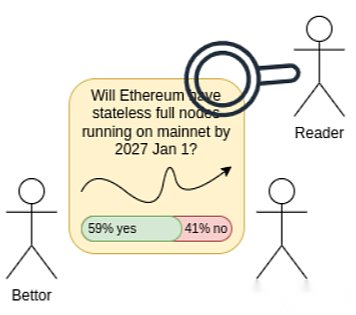
Information finance is a three-sided market: bettors make predictions, readers read predictions.The market will output the future predictions as public goods (as this is the purpose it is designed).
Predicting the market is an example: you want to know a specific fact that will happen in the future, so you set up a market to make people bet on that fact.Another example is the decision market: you want to know which one, Decision A, or Decision B, will produce better results based on a certain indicator M.To achieve this, you set up a conditional market: you ask people to bet (i) which decision will be chosen, (ii) if decision A is selected, then get the value of M, otherwise it is zero, (iii) if decision B is selected,Then get the value of M, otherwise it will be zero.With these three variables, you can determine whether the market believes that decision A or decision B is more beneficial to obtaining the value of M.
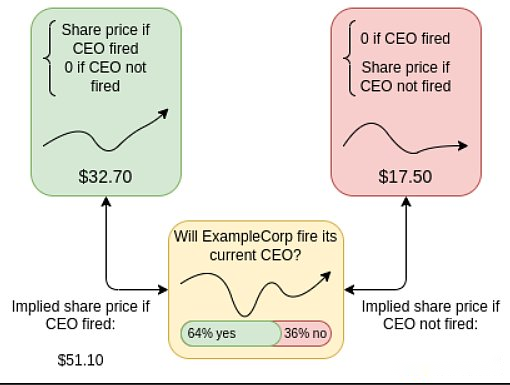
I expect that one technology that will drive the development of information finance in the next decade is AI (whether it is a big model or future technology).This is because many of the most interesting applications of information finance are related to the “micro” problem: millions of small markets, where decisions are viewed individually with relatively little impact.In fact, low-volume markets often do not work effectively: it doesn’t make sense for experienced participants to spend time doing detailed analysis just to make a few hundred dollars in profit, and many even think that without subsidies,The market simply cannot function because there are not enough naive traders to make experienced traders profit from it except for the biggest and most sensational problems.AI completely changed this equation, which means we have the potential to get quite high-quality information even in a market with trading volume of $10.Even if subsidies are required, the amount of subsidies for each issue becomes very affordable.
Information finance requires distilled by humans
judge
Suppose you have a trustworthy human judgment mechanism and that the entire community trusts it legitimacy, but making judgments takes a long time and high cost.However, you want to access at least one approximate copy of the “expensive mechanism” in real time at low cost.Here is the idea of what you can do by Robin Hanson: Every time you need to make a decision, you build a forecasting market that predicts what the costly mechanism will do to the decision if it is called.You let the forecast market run and invest a small amount of money to subsidize market makers.
99.99% of the time, you don’t actually call expensive mechanisms: maybe you’ll “revoke the transaction” and return everyone’s input, or you just give everyone zero, or you see if the average price is closer to 0 or1 and treat it as a basic fact.0.01% of the time – probably random, probably targeting the market with the largest volume, maybe a combination of the two – you will actually run expensive mechanisms and compensate participants accordingly.
This gives you a credible, neutral, fast and inexpensive “distilled version” that is the highly trusted but extremely costly mechanism you used to be (using the term “distilled” to compare “distilled” in LLM).Over time, this distillation mechanism roughly reflects the behavior of the original mechanism – because only the participants who helped achieve the result can make money, while others lose money.
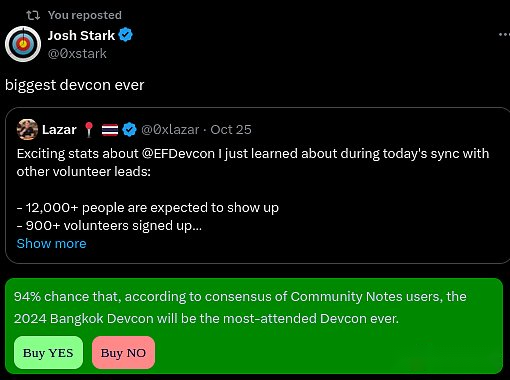
Possible prediction market + community notes combination model.
This applies not only to social media, but also to DAO.A major problem with DAO is that there are too many decisions that most people are reluctant to participate, which leads to either the widespread use of delegation, the risk of centralization and commissioned agency failure common in representative democracy or is vulnerable to attacks.If actual voting in DAOs rarely happens, most things are determined by the prediction market, and by humans and AI to predict the voting results, then this DAO may work well.
As we have seen in the decision-making market example, information finance contains many potential paths to solve important problems in decentralized governance. The key lies in the balance between market and non-markets: markets are the “engines”, while others are non-financialized.The trust mechanism is the “steering wheel”.
Other use cases of information finance
Personal tokens—a lot of projects like Bitclout (now deso), friend.tech, and many other projects that create tokens for everyone and make them easy to speculate—are what I call “raw information finance.”They deliberately create market prices for specific variables (i.e., expectations of a person’s future reputation), but the exact information revealed by prices is too vague and subject to reflexivity and bubble dynamics.It is possible to create an improved version of such protocols and address important issues such as talent discovery by taking into account the economic design of the token (especially where its ultimate value comes from).Robin Hanson’s reputational futures philosophy is a possible final state here.
Advertising – The ultimate “expensive but trustworthy signal” is whether you will buy a product.Information finance based on this signal can be used to help people determine what to buy.
Peer review of science – There has been a “reproduction crisis” in the scientific community, that is, some famous results have become part of folk wisdom in some cases, but ultimately cannot be reproduced in new research.We can try to determine the results that need to be rechecked by predicting the market.Before re-examination, such a market also allows readers to quickly estimate to what extent they should trust any particular result.Experiments on this idea have been completed and so far seem to have been successful.
Public Goods Funding – One of the main problems with the public goods funding mechanism used by Ethereum is its “popularity competition” nature.Every contributor needs to run his own marketing campaign on social media to gain recognition, and contributors who are not able to do this or are born with more “background” roles have a hard time getting a lot of money.An attractive solution is to try to track the entire dependency graph: for each positive result, which projects contribute how much to it, and for each project, which projects contribute how much to it, and so on.The main challenge of this design is to find out the weight of the edges so that they can resist manipulation.After all, this kind of manipulation is happening all the time.The human judgment mechanism of distillation may be helpful.
in conclusion
These ideas have been theorized for a long time: the earliest works on forecasting and even decision-making markets have been decades old, while similar discourses in financial theory are even older.However, I think the current decade offers a unique opportunity for the following main reasons:
Information finance solves the trust problem that people actually have.A common concern in this era is the lack of knowledge (and worse, the lack of consensus) and the lack of knowing who should be trusted in political, scientific and business environments.Information finance applications can help become part of the solution.
We now have scalable blockchain as the basis.Until recently, the expenses were too high to really achieve these ideas.Now, they are no longer too tall.
AI as participants.It is relatively difficult to play a role when information finance has to rely on humans to participate in every issue.AI greatly improves this situation, enabling an effective market even on small-scale issues.Many markets may have a combination of AI and human actors, especially when the number of specific problems suddenly changes from small to large.
To make the most of this opportunity, we should go beyond just predicting elections and explore what else information finance can bring to us.
Special thanks to Robin Hanson and Alex Tabarrok for their feedback and comments

